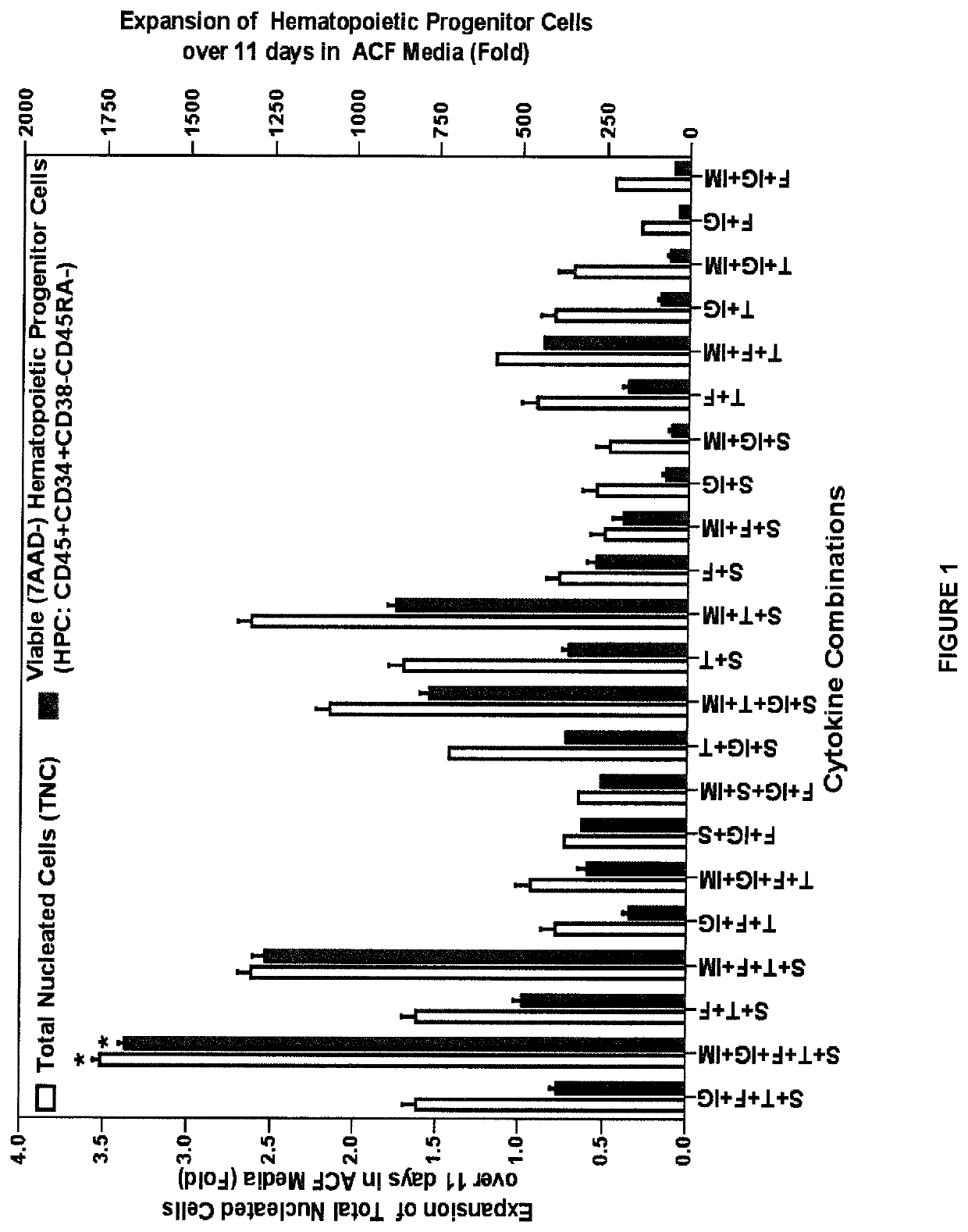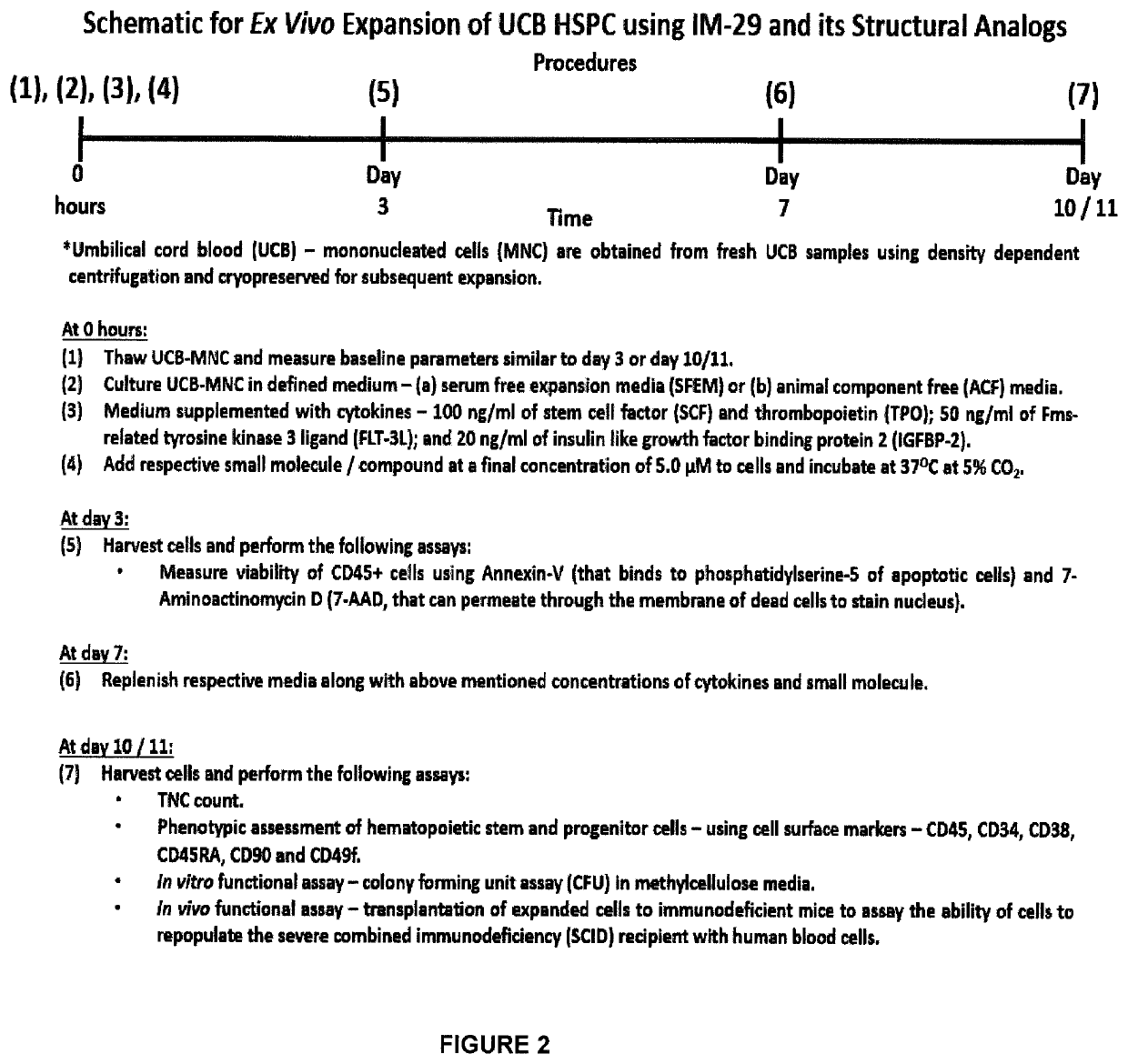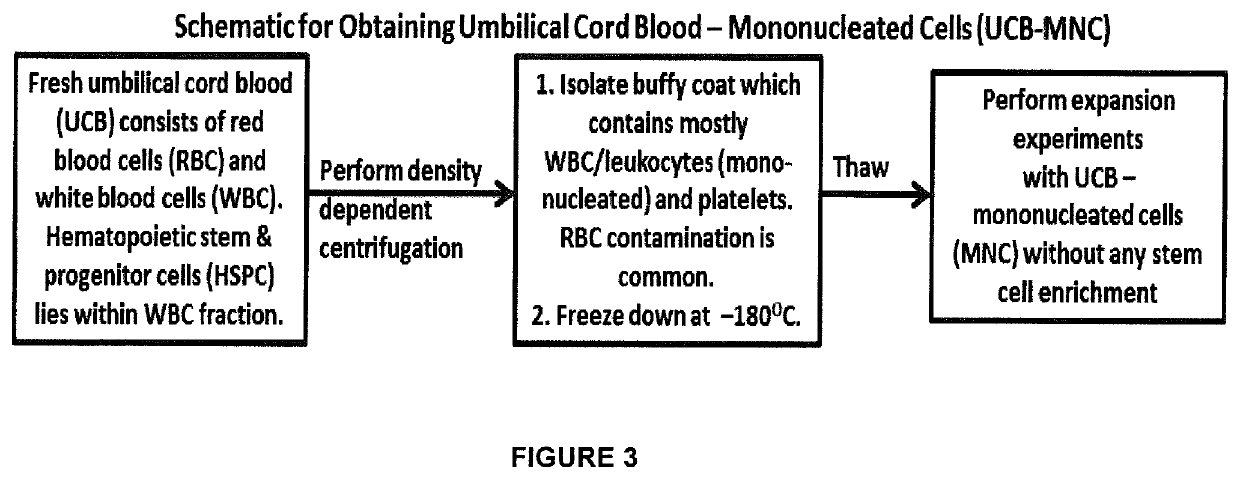Substituted azole derivatives for generation, proliferation and differentiation of hematopoietic stem and progenitor cells
a technology of hematopoietic stem and progenitor cells, which is applied in the field of substituted azole derivatives, can solve the problems of 960 ucbt (nmdp, usa) performed, significant challenges to their use in adult patients, and huge limitations in clinical us
- Summary
- Abstract
- Description
- Claims
- Application Information
AI Technical Summary
Problems solved by technology
Method used
Image
Examples
example 1
Methods
UCB Collection, Processing, Thawing and Plating
[0216]UCB was obtained through Singapore Cord Blood Bank (SCBB), from donated units failing to meet the criteria for clinical banking. Prior consent was obtained from the donating mothers and the Research Advisory Ethics Committee of the SCBB, along with the Institutional Review Boards of National University of Singapore (NUS), and Singapore General Hospital (SGH) approved the usage of the samples. Mononuclear cells (MNC) were isolated from the fresh UCB by density gradient centrifugation using Ficoll-Histopaque™ Premium (GE Healthcare, UK). Counted UCB-MNC was cryopreserved in 90% v / v autologous plasma with 10% v / v dimethyl-sulfoxide (DMSO) (Sigma Aldrich, USA) for subsequent usage. A brief summary of the method is shown in FIG. 3. UCB-MNC was thawed using human serum albumin (25% v / v) (Health Sciences Authority, Singapore) and Dextran 40 (75% v / v) (Hospira, USA). UCB-MNC were cultured at an empirically determined optimal densit...
example 2
Major Method Steps
[0233]In an example of the invention, the major steps involved in the method of expanding HSPC from frozen-thawed UCB-MNC using IM-29 are shown in FIG. 2:
(i) Process fresh UCB using density dependent centrifugation to isolate mononucleated (MNC) fraction which is frozen down at −180° C. for future expansion;
(ii) Thaw and culture UCB-MNC in defined culture medium containing a cytokine cocktail of SCF, TPO, FLT-3L and IGFBP-2;
(iii) Add IM-29 at a final concentration of 5.0 μM;
(iv) Incubate cells in a humidified incubator maintained at 37° C. and 5% CO2;
(v) At day 3—monitor the viability of the leukocyte cells (WBC) that express CD45. HSPC is a subset of CD45 cells;
(vi) At day 7—replenish (top-up) growth media, cytokines and IM-29;
(vii) At day 10 / 11—harvest cells for assessing expansion using in vitro phenotypic and functional assay and in vivo transplantation to immunodeficient mice to monitor repopulation capacity.
[0234]The changes in cell composition during expansi...
example 3
[0235]Small Molecules Derived from Compound SB203580
[0236]The small molecule library consisted of several analogues, all of which were derived from the parent compound SB203580 (FIG. 6D) which is a known inhibitor of p38 MAPK (mitogen activated protein kinase), with optimal activity at a working concentration of 5 to 10 μM. Compound IM-29 with chemical structure shown in FIG. 6A is the most effective of those tested. IM-04 with chemical structure shown in FIG. 6B is the second most effective compound. Structural analogues of IM-29 and IM-04 that gave sub-optimal effect are shown in FIG. 6C. A total of forty analogues of SB203580 were generated for this study, which are shown in FIG. 6E and broadly divided into four groups based on the structure and chemical modification. Group 1 of FIG. 6E examined the variation of the substituents at C-2 position of imidazole while retaining the vicinal pyridine-4-yl / 3-tolyl or pyridine-4-yl / 3-(trifluoromethyl)phenyl moiety at C-4 and C-5 positions...
PUM
| Property | Measurement | Unit |
|---|---|---|
| concentrations | aaaaa | aaaaa |
| temperature | aaaaa | aaaaa |
| body weight | aaaaa | aaaaa |
Abstract
Description
Claims
Application Information
 Login to view more
Login to view more - R&D Engineer
- R&D Manager
- IP Professional
- Industry Leading Data Capabilities
- Powerful AI technology
- Patent DNA Extraction
Browse by: Latest US Patents, China's latest patents, Technical Efficacy Thesaurus, Application Domain, Technology Topic.
© 2024 PatSnap. All rights reserved.Legal|Privacy policy|Modern Slavery Act Transparency Statement|Sitemap



